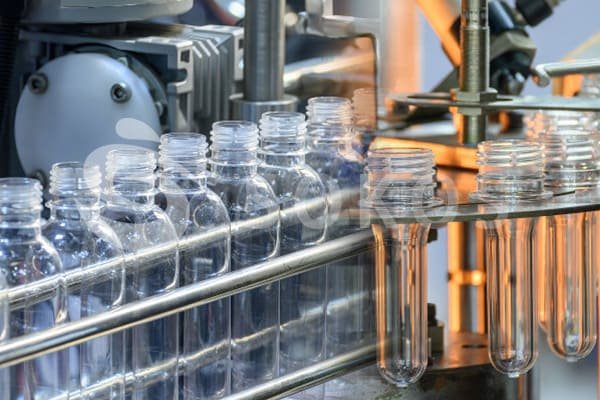Safety & Efficiency Guide
Blow molding machines form the essential core of plastic container manufacturing, converting raw polymer materials into the everyday bottles we rely on. Ensuring their correct operation is paramount for achieving operational safety, production efficiency, and consistent product quality. Leveraging deep industry expertise in bottle machinery and plastic extrusion technology, this guide provides a comprehensive overview of critical operational procedures.

I. Pre-Startup Preparation: The Critical Foundation
-
Know Your Machine: Thoroughly study the operator’s manual before operation. Understand its specific functions, controls, and safety systems. Never operate unfamiliar equipment.
-
Fluid Level Checks:
-
Hydraulic Oil: Verify levels are within the sight gauge’s upper 2/3 mark. Top up only with the manufacturer-specified oil type if low. Incorrect oil damages systems.
-
Lubrication: Ensure the manual oil pump reservoir is filled to the indicated level. Pump lubricant through all points until oil is visibly present at lubrication fittings.
-
-
Safety Integrity Check:
-
Confirm all safety guards and interlocks (especially door switches) are present, undamaged, and fully functional. Never operate with missing or bypassed guards.
-
Ensure the machine area, particularly moving parts (clamps, platens, rods), is completely clear of tools, debris, or personnel. A clean workspace is a safe workspace.
-
-
Utility Verification:
-
Cooling Water: Check pressure is stable within the required range (typically 2-6 kgf/cm²). Consistent cooling is vital for mold temperature control and cycle time stability in water bottle manufacturing machine lines.
-
Compressed Air: Start the air compressor and ensure system pressure reaches the operational range (e.g., 5-8 kgf/cm²) before initiating machine cycles. Air drives many critical functions.
-
-
Electrical & Mechanical Inspection:
-
Visually check for obvious electrical issues (damaged cables, loose connections) or hydraulic leaks. Report any concerns immediately.
-
Ensure no maintenance personnel are working on or near the machine frame.
-
-
Material Heating & Soak:
-
Power on the barrel and die head heaters well in advance (as per machine specs). Heating profiles are material-specific (e.g., PET requires precise temperature zones).
-
Crucially, allow the material to “soak” at the target temperature for at least 5 minutes after reaching setpoint. This ensures uniform melt viscosity essential for consistent parison formation and bottle wall thickness.
-
II. Startup & Operation: Precision & Vigilance
-
Solo Operation & Safe Start:
-
Only one trained operator should run the machine during production (excluding mold setup). Clear all personnel from danger zones (mold closing area, robot paths).
-
Initiate a test cycle using the start button. Visually confirm normal movement before releasing the button. Watch for smooth platen movement, proper parison extrusion, and air valve timing.
-
-
Parameter Adherence:
-
Set all machine parameters (temperatures, pressures, timers, clamp force, blow pressure/stretch rod timing) strictly according to the validated Process Card for the specific bottle and material.
-
Monitor and record critical parameters (e.g., heater temperatures, cycle times, key pressures) on the Production Process Monitoring Card at least every two hours. This is vital for traceability and quality control.
-
-
Continuous Monitoring:
-
System Pressure: Regularly verify hydraulic pressure stays within limits (e.g., max 140 kgf/cm², normal max 100 kgf/cm²). Ensure accumulator pre-charge pressure is correctly set.
-
Temperature Control: Monitor heater zones continuously. Temperatures should generally remain within ±10°C of the setpoint. Significant drift indicates heater/thermocouple issues.
-
Product Quality: Visually inspect bottles frequently for defects (uneven walls, bubbles, poor seams, deformation) which can indicate parameter drift or machine issues.
-
-
Immediate Response to Issues:
-
If any abnormality, malfunction, unusual noise, or safety concern arises: STOP THE MACHINE IMMEDIATELY using the emergency stop.
-
Clearly tag the machine (“Out of Service – Do Not Operate”) and report the issue to maintenance personnel. Never attempt repairs unless qualified and authorized.
-
III. Shutdown Procedure: Orderly & Safe
-
Controlled Stop:
-
Place the machine into “Manual” mode.
-
Command the machine to return to its “Home” position (mold open, platens retracted, blowhead raised).
-
-
Sequential Power Down:
-
Turn OFF the hydraulic oil pump motor.
-
Turn OFF all barrel and die head heaters. Allow fans/cooling to continue running until temperatures drop significantly (often specified in the manual).
-
Finally, turn OFF the main electrical power supply.
-
IV. Non-Negotiable Safety Protocols
-
Locked Out Access: ABSOLUTELY NO entry into machine guarding (doors, fences, light curtains) during operation or while energy sources (electrical, hydraulic, pneumatic) are present. Maintenance requires strict Lockout/Tagout (LOTO) procedures.
-
Guarding is Paramount: Operating without functional guards or interlocks is strictly prohibited. These are the primary defense against crushing and entanglement hazards inherent in bottle machinery.
-
Trained Personnel Only: Only adequately trained and authorized personnel may operate, set up, or maintain the equipment.
Operating a blow molding machine effectively demands strict adherence to procedures, constant vigilance, and a deep commitment to safety. This bottle machinery is sophisticated industrial equipment.
For companies investing in a water bottle manufacturing machine line, partnering with experienced manufacturers like Jiangsu Feige Youlian Machinery provides access to reliable technology and valuable operational support built on years of application knowledge. Always prioritize consulting your specific machine’s manual and established site safety protocols above general guides.

